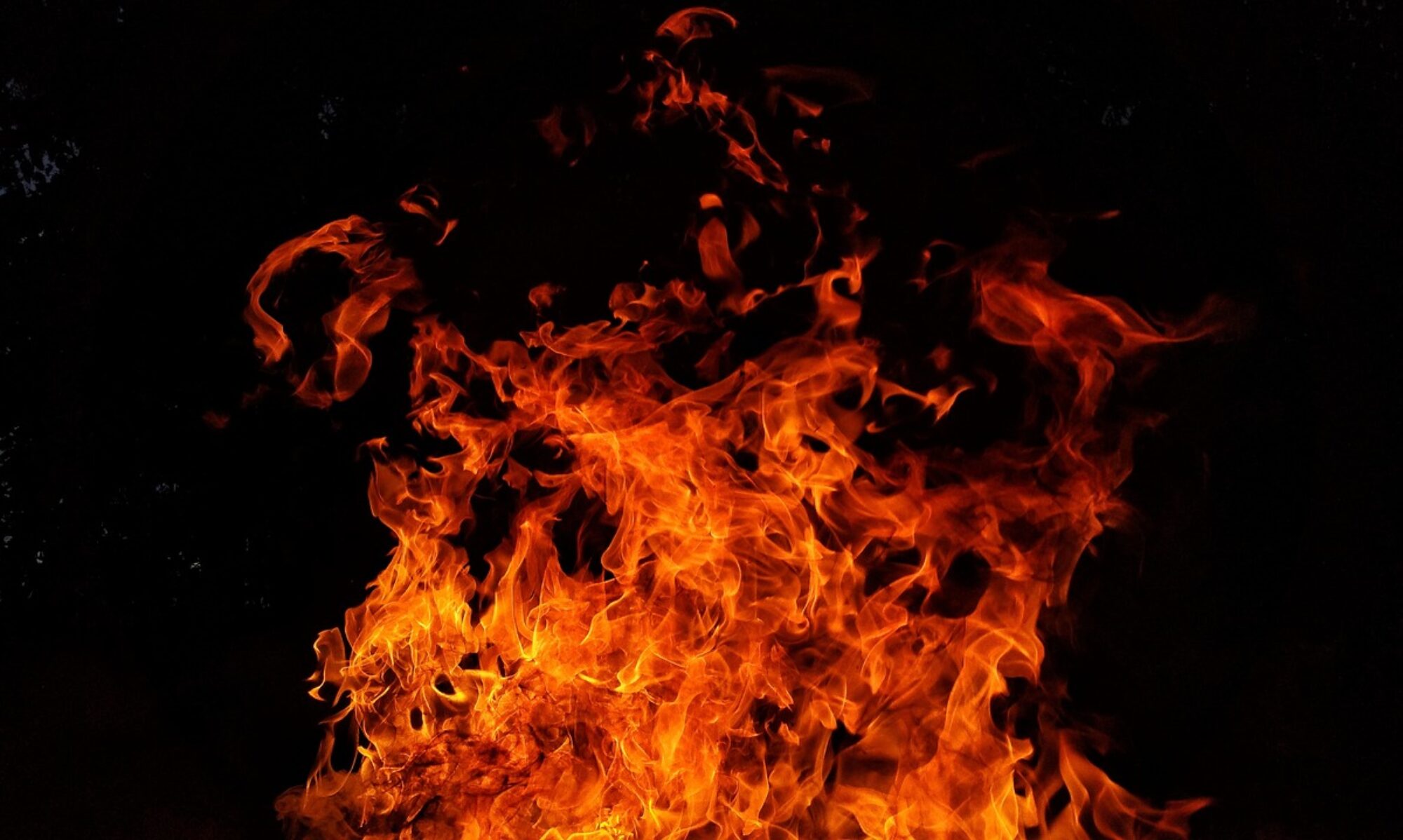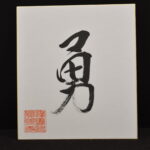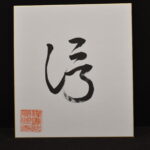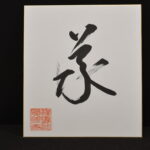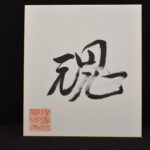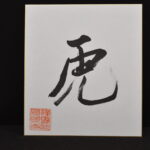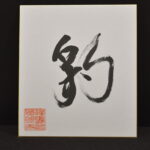We entrust The Power of Kotodama to Kanji calligraphy and offer it to everyone.
Spoken words have meanings, spirit and express the power and affect all things, all events in the universe. This is called Kotodama. However, words are the sounds which disappear the moment they are spoken.
Since ancient times, the power of spirit of language is within the Kanji and is stored to manifest the hidden messages dwell in Kanji.
Samurai has conviction of “fighting bravely”. They always have Kanji with them at hands to confirm the beliefs and to pledge that they are not against it. It is expressed by the Kanji “勇気”. It means “Brave” in English.
Shapes of Kanji express their meanings. Kanji represents beliefs, values, desires, cry of the hearts, joy and sorrows in their shapes.
On the other hand the language works on every event, everythings in the universe.
The words met Kanji brought from China and are integrated into Japanese language that are unique to Japan.
Its driving force came from Buddhism and sutra that are unique to Japan. The meaning and the image of Kanji are well-integrated into the efficacy of Kotodama and create Japanese own culture that is unique to Japan.More than 1200 years ago, a Japanese monk named Kukai went to China and established Shingon Mikkyo after he came back to Japan. Shingon Mikkyo is based on the idea that Shingon sound is the Kotodama (soul of language) in Shingon Mikkyo, as it’s named and has its own power.
Ritual of secret teaching which utilizes Kotodama brings happiness, desire and victory. Furthermore, it also made it possible to curse people. Kotodama dwells in the divine flame and it gives power to those who have it.
Kotodama has a contract with the universe of words.
We are not simply offering the Kanji.
We are ready to offer the Kanji with Kotodama a contract with the universe. It is not the same as calligraphy made by an artist. It is the art whose value is decided by the artist who created it, like Van Gogh and Piccaso.
However, Kotodama’s value in Kanji is not about who created it but about the spirit of the owner who wants to have it by his/her side.
This is not an amulet or a talisman.
The value is expressed within the owner’s heart that it never betrays you if you follow.
Contents of distribution
・
Calligraphy work body Size: W:246mm H:274mm
material: Japanese paper(Shikishi)
・Certificate of this work
・Dedicated luxury picture frame(one and only item Size example : W411 H450)
*The frame is also a one and only item, so the size and design may change depending on the work.
・USB flash drive with video and other image data stored inside.
・Author, Calligrapher and Goma prayer: Koyasan Shinshoji Temple.
・Goma Prayer recording video of the work
*Each work is unique and is handcrafted by a calligrapher. A certificate and the prayer videos on each work are attached as well as other handouts.
*The calligraphy work may have a slight amount of soot because it was exposed to the fire of the Goma Prayer.
The chief priest will explain the effects of the Goma Prayer.
Each Kanji work is written by professional calligrapher. Each goes through the fire of the GOMA prayer.
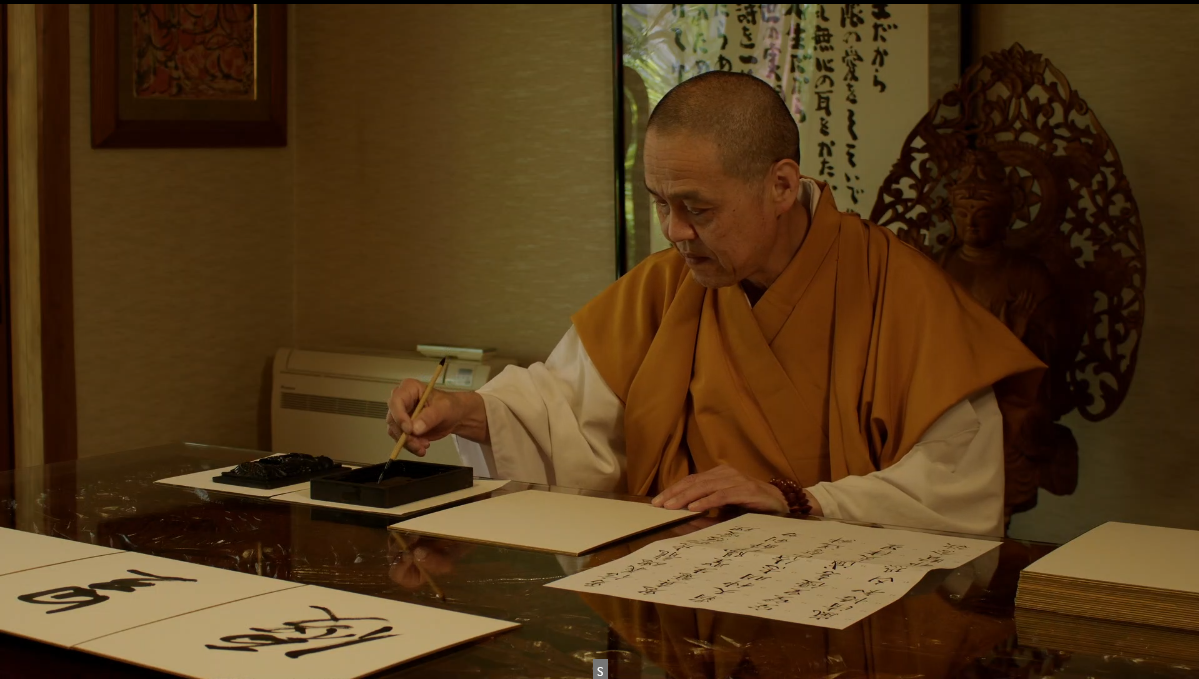
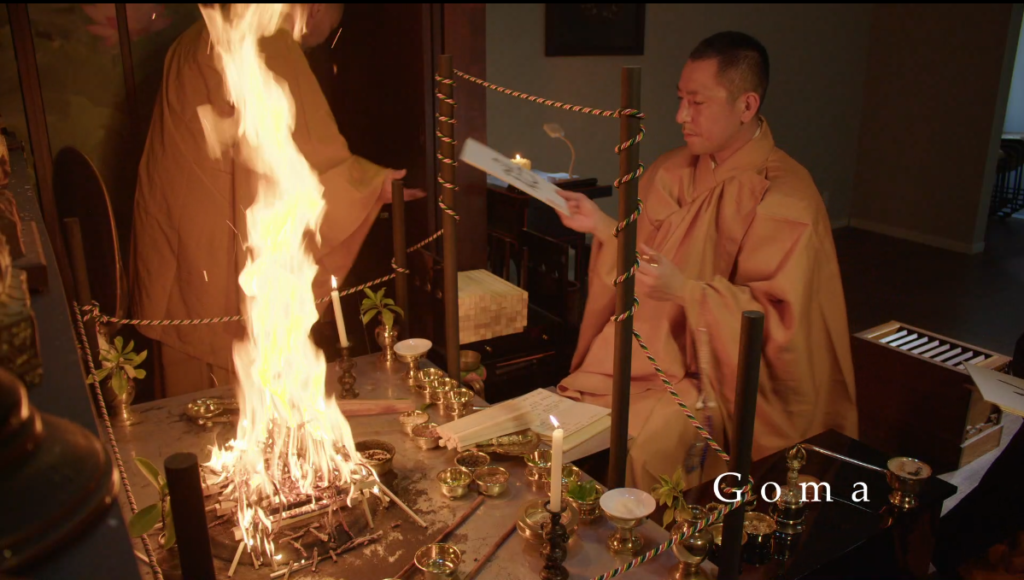
Only one kotodama is born for each Kanji work through a Kaji prayer.
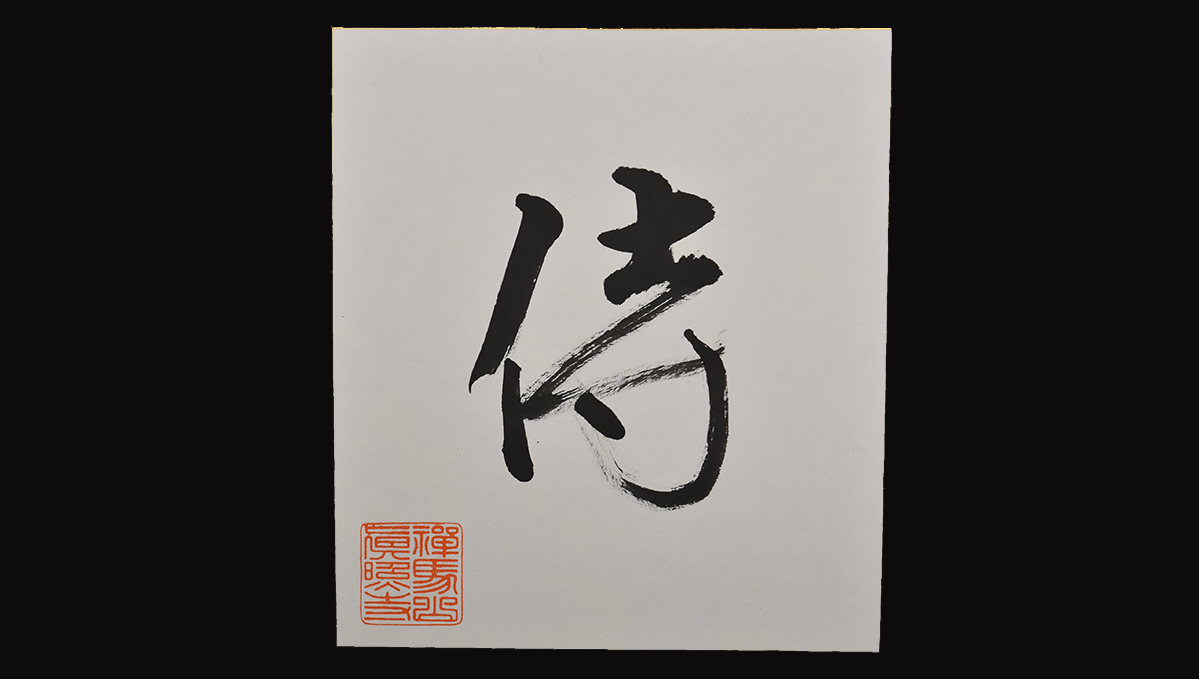
The frame that decorates the work is also a handmade one-of-a-kind item.
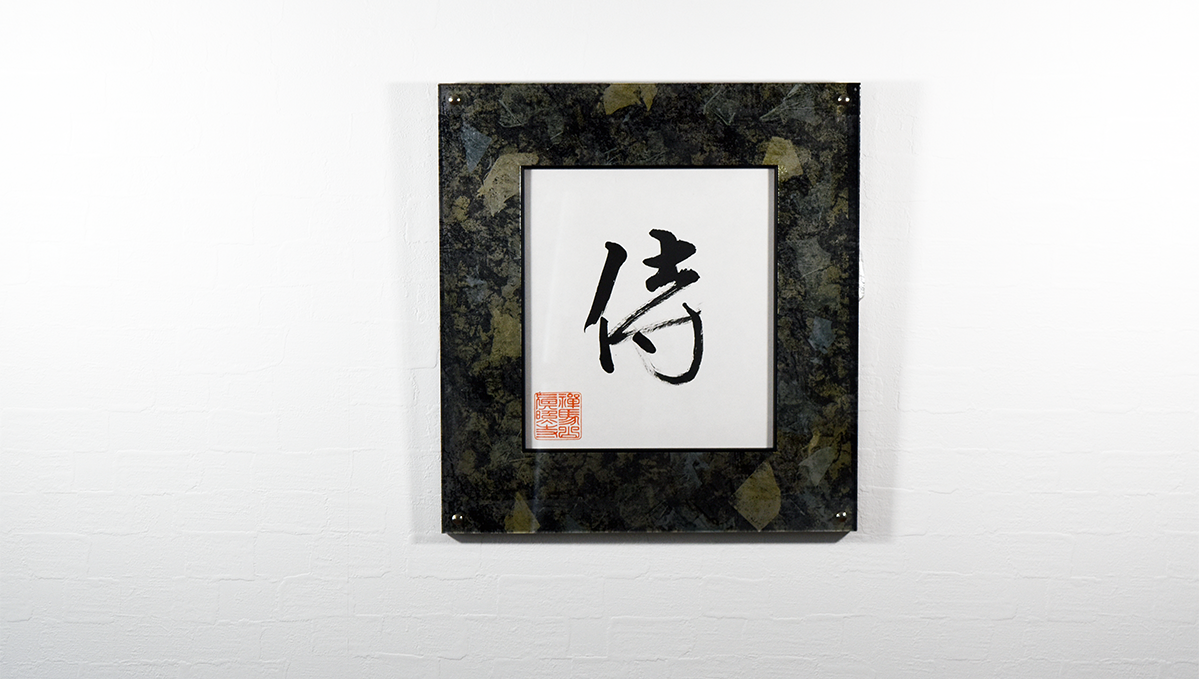
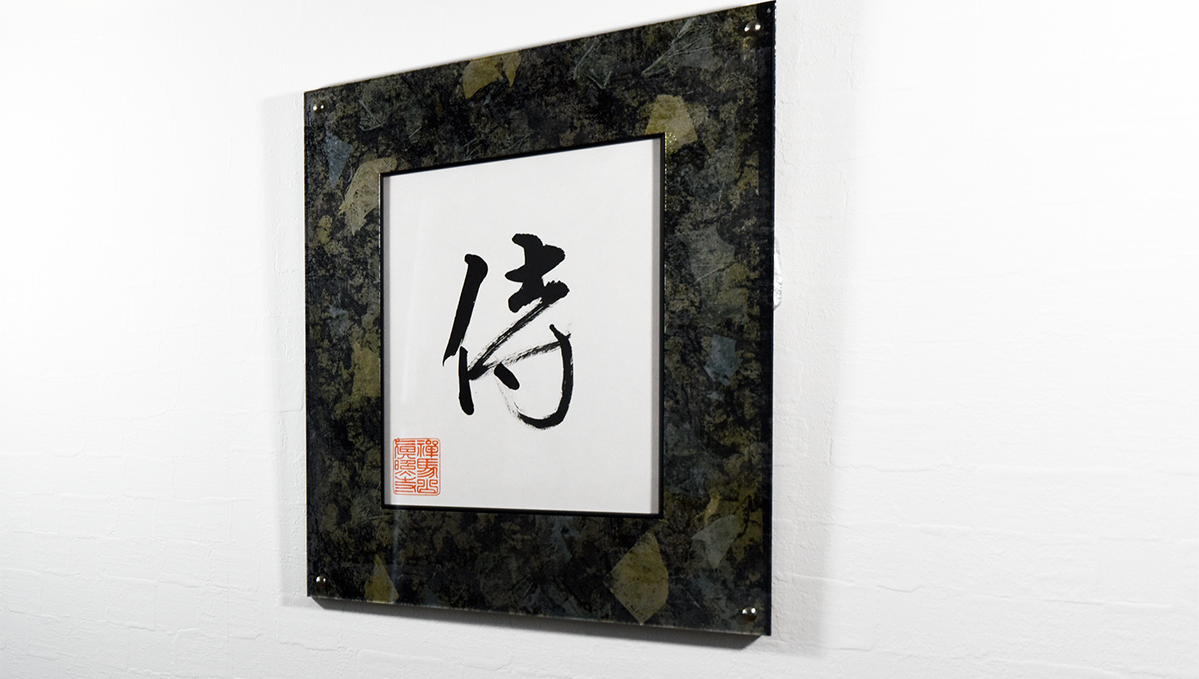
Each work comes with a certificate issued by Koyasan Shinshoji Temple which proves of handwriting, Goma prayer and its origin.
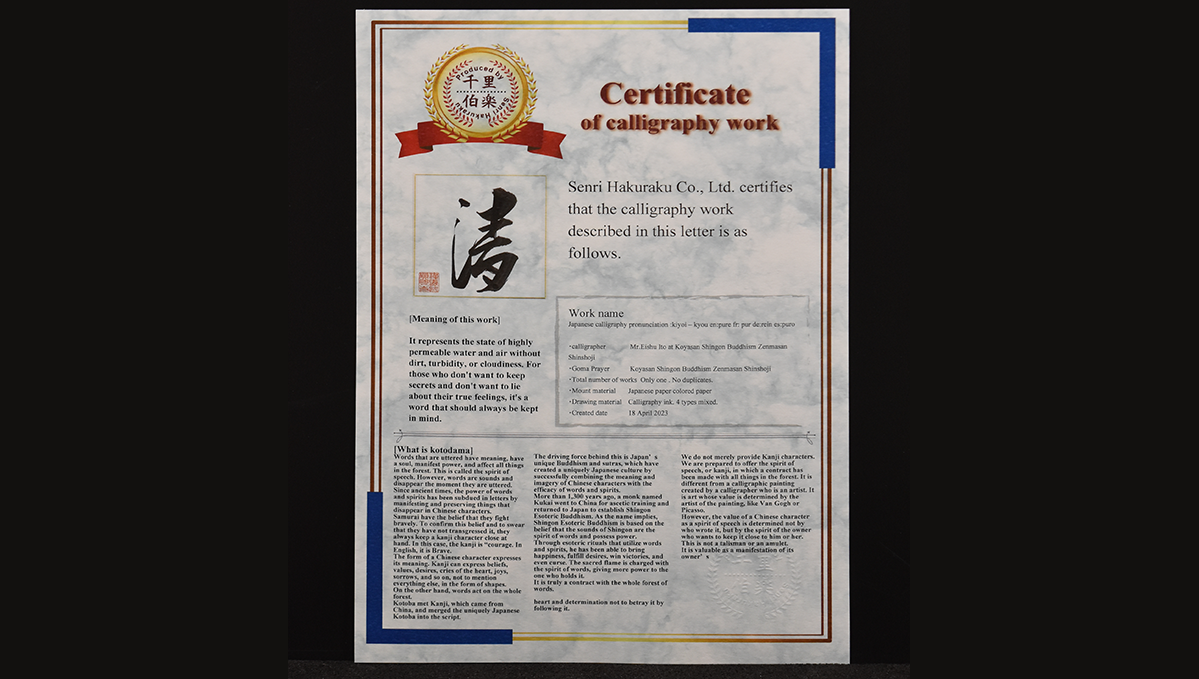
Kotodama collection
new arrivals
- A fearless heart that does not flinch when fighting. This is an essential mental attitude for a samurai who heads to the battle. Those who see life as a battle should always possess. Writing and praying for this Kanji Contents of distribution Calligraphy work body Size W:246mm H:274mm material:Japanese paper(Shikishi)certificateDedicated luxury picture frame(single item Size …
Japanese calligraphy pronunciation :”tayori – shin” English:faith French: foi Spanish:fe German:glaube.9846
A sense of value that unconditionally agrees the object regardless whether it is right or wrong. Denial on the grounds of right and wrong is not true faith. It belongs to those who find values in their single-minded heart. Overview from Kanji Writing to Kaji Prayer Contents of distribution Calligraphy work body Size W:246mm H:274mm …Japanese calligraphy pronunciation :”yoi – gi” English:righteousness French: droiture Spanish:justicia German:gerechtigkeit.9883
It is an attitude towards those who helped you while you were being established. Righteousness is the sense of value to help the benefactor definitely when he or she falls into a predicament. Overview from Kanji Writing to Kaji Prayer Contents of distribution Calligraphy work body Size W:246mm H:274mm material:Japanese paper(Shikishi)certificateDedicated luxury picture frame(single item …Japanese calligraphy pronunciation :”tamashī – kon” English:soul French: âme Spanish:alma German:seele.9895
Core of the existance. It is called a Soul in English. It has no shape and you cannot see with your eyes. You just feel it. Always forcus on it if you want to touch the essense of things. Overview from Kanji Writing to Kaji Prayer Contents of distribution Calligraphy work body Size W:246mm H:274mm …Japanese calligraphy pronunciation :”tora – ko” English:tiger French: tigre Spanish:tigre German:tiger.9930
A solitary king, the top of the beasts which never flock. Admire the existence if you want to be strong and do not want to depend on other. Overview from Kanji Writing to Kaji Prayer Contents of distribution Calligraphy work body Size W:246mm H:274mm material:Japanese paper(Shikishi)certificateDedicated luxury picture frame(single item Size example : W411 H450)*The …Japanese calligraphy pronunciation :”- – hyō” English:leopard French: léopard Spanish:leopardo German:leopard.9947
A carnivore which hold high abilities. It is acknowledged as an incarnation of wisdom and agility. Have the heart of a leopart if you want to be called Agile. Overview from Kanji Writing to Kaji Prayer Contents of distribution Calligraphy work body Size W:246mm H:274mm material:Japanese paper(Shikishi)certificateDedicated luxury picture frame(single item Size example : W411 …
Introduction to Shinshoji Temple, Koyasan


All KanjiArt delivered to you are prayed for at Shinshoji Temple.
Shinshoji Temple is located in Yokohama City, Kanagawa Prefecture, Japan, and is dedicated to Bishamonten, a god of Buddhism, and is beautiful with seasonal flowers.
According to temple legend, the temple was rebuilt in the late Heian period (1182 A.D. ) by Arinaga Hirako, a lord of Isogo, and was founded nearly 1,000 years earlier.
According to temple tradition, the temple was rebuilt in the late Heian period (1182 A.D. ) by Arinaga Hirako, a lord of Isogo. There are no records prior to that time, and the founder of the temple is unknown.
Heiko Arinaga, whose name can be seen in Azuma Kagami, was a military commander who was assigned to guard Minamoto no Yoritomo’s camp during the Soga brothers’ revenge attack, and was wounded in a cut-and-run with Soga Sukenari ( Soga Juro). According to temple legend, he was so pleased to have survived his serious injuries that he dedicated a statue of Bishamonten to the temple, attributing his survival to the blessings of Bishamonten, a deity he had always believed in.
During the Edo period, the temple was recognized by the shogunate as a red seal temple for special prayers. The temple’s terakoya (school for children) became Isogo Shinsho Gakko (Isogo Shinsho School) in the Meiji era (1868-1912), and is now Isogo Yokohama Municipal Elementary School.
